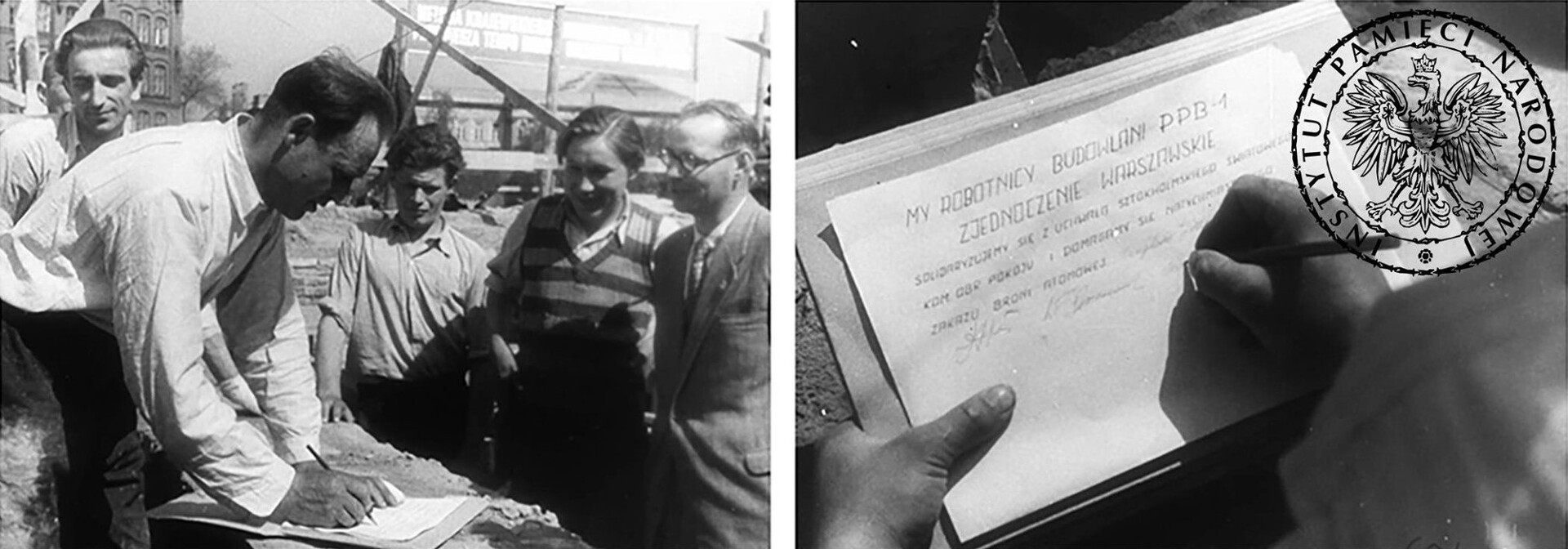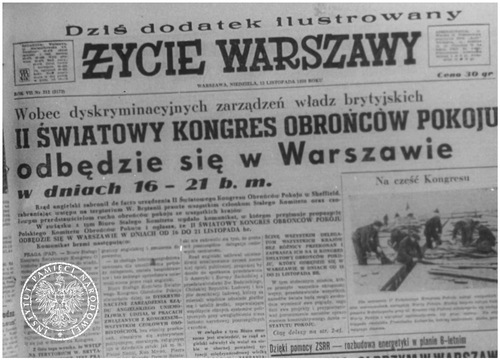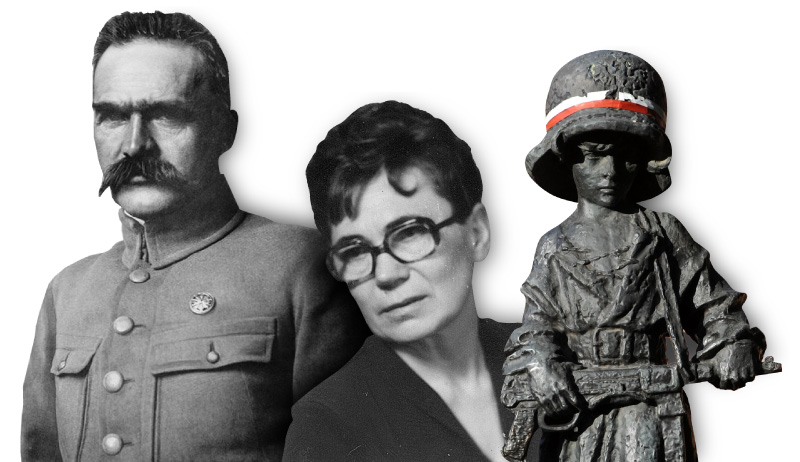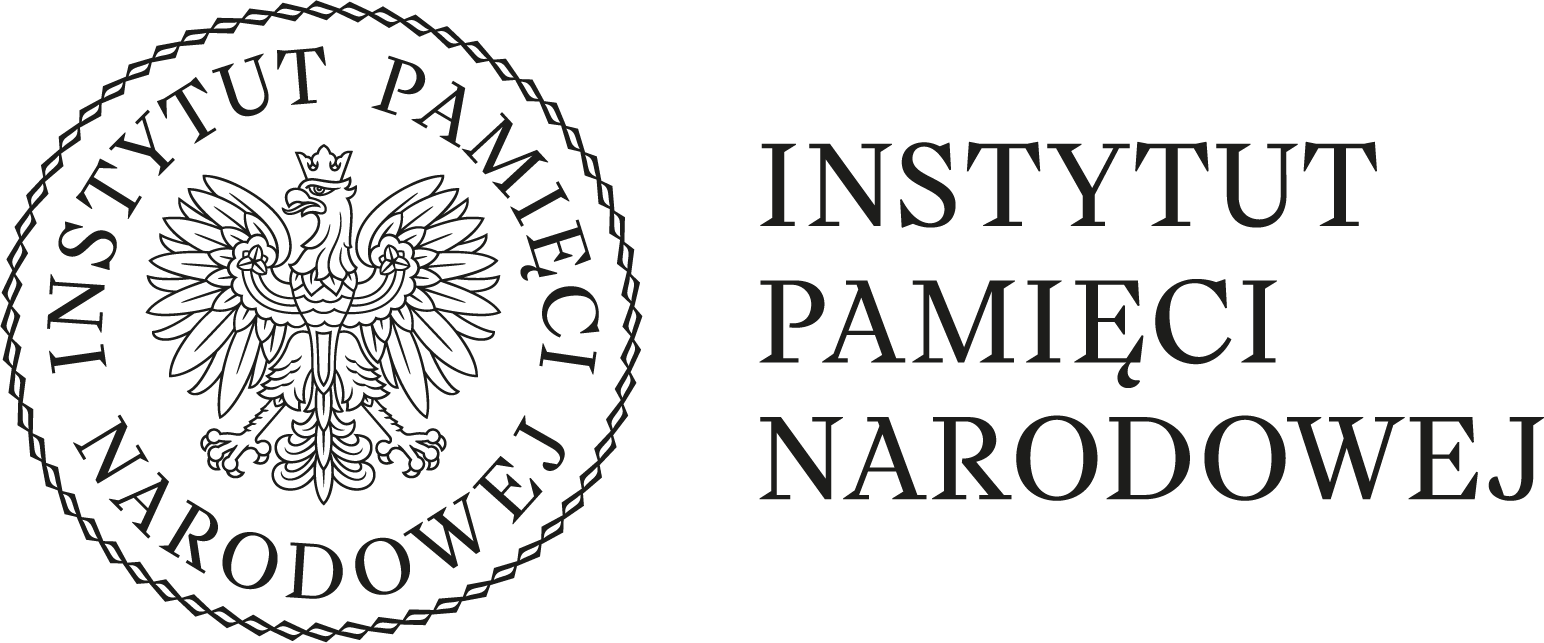Preparations
Public opinion played a huge role in western democracies and their political endeavours. The Second World Congress in Defence of Peace, organised in 1950, was directed towards public opinion’s consciousness.
The Congress, which was initially to take place in Sheffield, Great Britain, was moved to Warsaw after the British government refused to host such a communist event on its territory. Between 16 and 21 of November, Warsaw welcomed communists from the entire world.
Polish communists meticulously prepared for the event by organising a huge propaganda campaign. The invited delegates received reports and resolutions from workplaces, and even rhymes and wishes from children.
The demand to ban nuclear weapons was the true intent of the communist Congress. The Soviets, sticking to the Leninist concept of treating war as part of their policies, were in defence towards the NATO countries until the end of the 1940s.
The press criticised the British and American governments and demanded a ban on using nuclear weapons. This demand was the true intent of the communist Congress. The Soviets, sticking to the Leninist concept of treating war as part of their policies, were in defence towards the NATO countries until the end of the 1940s. The US nuclear arsenal effectively prevented the Soviets from unreasonable actions.
Stalin, wanting to keep his allies from beyond the Iron Curtain in revolutionary moods, and weakening his enemies at the same time, sent a message to western nations through the Congress that nuclear weapons need to be eradicated. He argued that they too big of a threat to world peace. Of course, at the very same time, the Soviets kept developing their own nuclear weapons program in secret and performed their first nuclear bomb test at the Semipalatinsk training ground on August 29, 1949. They did not care about the World Peace Congress about to begin in November.
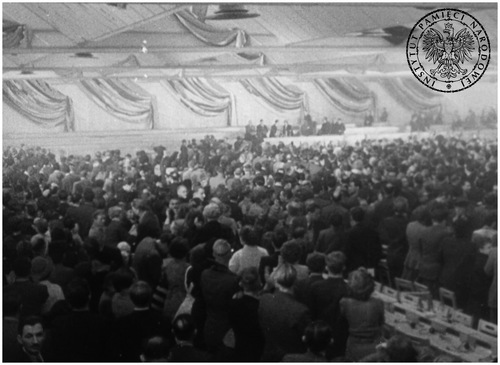
Warsaw, main hall of the House of Polish Word. Debates of the participants of the Second World Congress in Defence of Peace (16-21 November, 1950). Frame from a propaganda film “The fight’s journey” produced by Office “B” of the 12th Department of the communist Ministry of Internal Affairs. Photo from the archives of the Institute of National Remembrance
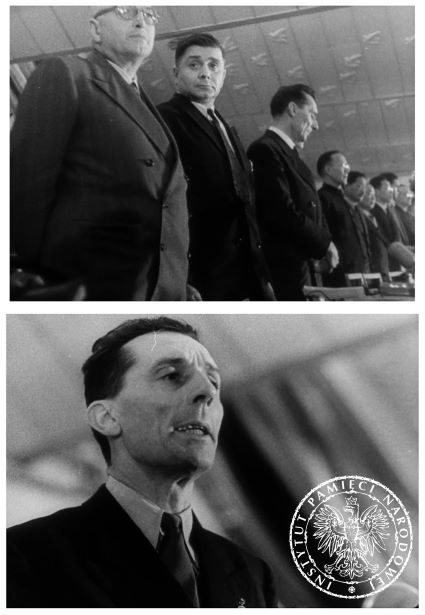
Members of the World Peace Council established at the Second World Congress in Defence of Peace. In the upper picture, the third from the left and in the lower one: Jean Frederic Joliot-Curie (husband of Irene Curie - Maria Skłodowska-Curie's daughter), Nobel laureate (chemistry), member of the French Communist Party, president of the WPC. Frames from a propaganda film produced by the communist Ministry of Internal Affairs. Photo from the archives of the Institute of National Remembrance
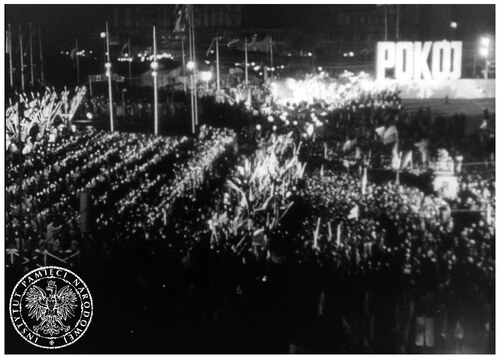
A huge demonstration of 150,000 people in Victory Square in defence of world peace, organised by the communists during the Second World Congress in Defence of Peace (Warsaw, November 16-21, 1950). Frame from a propaganda film “The fight’s journey” produced by Office “B” of the 12th Department of the communist Ministry of Internal Affairs. Photo from the archives of the Institute of National Remembrance
The Stockholm Appeal
The World Peace Council was established during the Second World Congress in Defence of Peace. The Council announced the so-called Stockholm Appeal — a document summarising the propaganda actions initiated by the Permanent Committee of the World Congress in Defence of Peace, which in March, 1950, in Stockholm, adopted a resolution calling for “a definite ban on nuclear weapons as a tool of aggression of mass destruction of people”.
The Soviets kept developing their own nuclear weapons program in secret and performed their first nuclear bomb test at the Semipalatinsk training ground on August 29, 1949. They did not care about the World Peace Congress about to begin in November.
Signing campaigns for the Appeal were organised in various countries of the eastern bloc. The Committee of the Defenders of Peace was responsible for gathering the signatures in communist Poland. It had its structures at every level of state administration, even in local governments and residential committees. A single committee could influence up to a thousand residents. Per their orders, members of the committees would visit every apartment or farmhouse in groups of two or three and held conversations explaining the goal of the “fight for peace.” They also encouraged people to sign the Appeal.
Over the course of two months, until June 18, 1950, as much as 18 million Poles signed the Stockholm Appeal, almost the entirety of the country’s adult population. The Stockholm Appeal called on nations of the world to hold a plebiscite regarding the ban on nuclear weapons production.
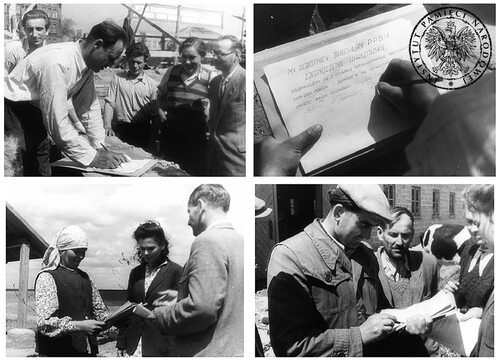
The initiative of collecting signatures under the Stockholm Appeal (conducted between May-June, 1950). Frames from a propaganda film “The fight’s journey” produced by Office “B” of the 12th Department of the communist Ministry of Internal Affairs. Photo from the archives of the Institute of National Remembrance
The declaration was as follows:
“We demand a definite ban on nuclear weapons as the weapon of aggression and mass destruction of people. We demand the establishing of strict international control over the implementation of this resolution. Any government which would first use nuclear weapons against any other country would be considered war criminals.”
According to Encyclopaedia Britannica, around 500 million signatures in total were gathered all over the world thanks to the swift propaganda campaign of the Soviet Union.
